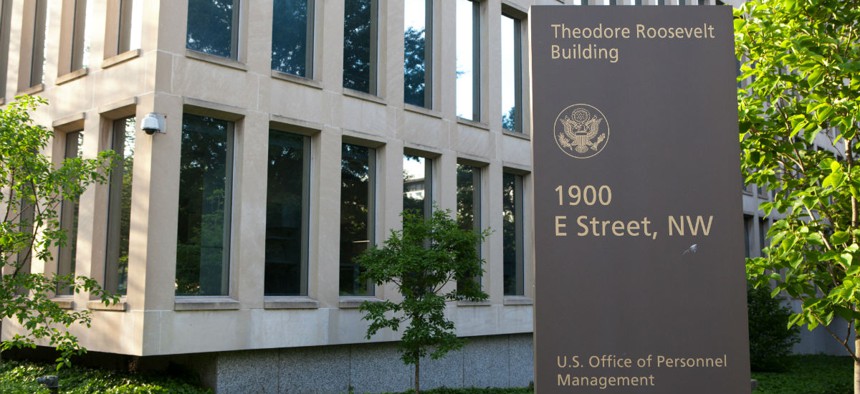
Mark Van Scyoc / Shutterstock.com
New OPM Director Promises to Improve Response to Data Breach
White House CIO says long term solution will require investing in new technology.
On her third full day as acting director of the Office of Personnel Management, Beth Cobert told labor leaders and agency supervisors that she herself was a victim of the recent data breach, and promised to “do everything we can do restore trust and confidence” in the government’s personnel and data security capabilities.
“I understand the frustration and uncertainty affecting you and your employees,” Cobert told a meeting Wednesday of the National Council on Federal Labor-Management Relations. “You haven’t been shy about providing feedback on cyber, and I assure you we will take all that into account as we make sure that everyone who was affected receives the highest level of service possible.”
Cobert, who until Friday was President Obama’s deputy director for management at the Office of Management and Budget, brought along controller David Mader—who is subbing for her at the White House—and federal Chief Information Officer Tony Scott, who summarized coming results of the governmentwide “30-day cybersecurity sprint” aimed at beefing up agency protections against cyber-intruders.
The steps the Obama administration has taken so far to provide relief to victims of the breach have not required additional funds, the team assured the agency union and management representatives. But the long run may require technological modernizations that inevitably mean new investments.
In an overview of OPM’s updated guidance at OPM.gov/cybersecurity, Cobert noted that individuals whose personnel records were stolen are automatically enrolled in identity protection programs. The new call-centers being run by contractor CSID “when they started out were not acceptable,” she said. But OPM is monitoring the situation daily, and the wait time is averaging six minutes, with morning the busiest time, she said.
Some 20 percent of victims of the OPM hacking have enrolled in credit monitoring, which is significantly higher than the average in private-sector incidents, she said. “We are working diligently to track the others down,” she said. An English-Spanish call center is also being set up to help victims who aren’t comfortable using a website, though those using the website are staying as long as five minutes and using the links, she said.
The separate breach involving background checks, she said, affects a variety of individuals including spouses of federal employees, contractors, job applicants never actually hired and children. OPM is planning focus groups with victims—mostly those who were investigated after the year 2000, and the Defense Department is helping select a private software firm to help find those affected. “In the long term, we will [plan new protections] for all federal employees, not just those affected by these breaches,” Cobert said.
She thanked the Homeland Security Department’s Computer Emergency Readiness Team and the Pentagon, adding that she is “committed to addressing what [problems] these intrusions created for the federal workforce and the federal family. This is my No. 1 priority in taking on this role.”
Scott cited his many years with private-sector IT firms, noting that the “rising flood” of cyber issues has climbed up the agenda of corporate meetings. “There are two kinds of CIOs-- those who know they’ve been hacked and those who didn’t know,” he said. “But there’s pretty much certainty that all have been hacked,” and only with modernized tools do they discover things that were going on without their awareness. “I’m not saying this as an excuse or to deflect anything going on at OPM and the government,” Scott said. “But this is a super important issue that affects the economy, and federal, state and local governments, so all must be concerned.”
The 30-day cyber-sprint will show positive trends in what agencies are doing to protect against breaches, Scott said. Recommendations will include a requirement for two-factor authentication for 100 percent of privileged users (unrestricted access for administrators and the like), he said, with a goal of 75 percent use of two-factor sign-ons for other employees. Agencies will be patching critical online vulnerabilities and improving general “cyber-hygiene,” such as performing more regular scans of websites looking for intruders and more frequent cyberstat reviews, with “updated goals and metrics for each agency to adhere to,” he said. “We try to do better after each occurrence,” Scott said. “In the future, we’re likely to find additional issues.”
J. David Cox, national president of the American Federation of Government Employees, while noting that the government must regularly deal with natural disasters, asked whether the administration is “going to ask Congress for emergency funding to bring this system up to the standards necessary? We’re subject to the whims of Congress.”
Cobert said the early stages of the response involved an “all of government” approach to pooling resources while “actually understanding what we need,” rather than more money. The solution “is not just the responsibility of the IT departments,” she said. “It’s all hands on deck.”
Scott added that “even a ton of money won’t solve the problem in the short term. The vast majority of systems use technical design, development and operations from an era when we did not face the kind of threats we face now.” Scott likened some of the short-term software fixes to using “bubble wrap and Band-Aids.” He added: “It’s like putting air bags on a ’65 Mustang-- it’s not pretty and no one will want the product.”
“It’s a mistake to believe that using legacy technology will create a world that protects 100 percent of the time against future threats,” he said. Instead, the government needs systems that detect intrusions more quickly, and isolate and derail the intruders more quickly. “The longer-term plan has to involve systems with infrastructure and applications that do a better job, not those built in by default,” he said.
One of the biggest challenges, Scott added, is recruiting people with the right cyber skills.
(Image via Mark Van Scyoc / Shutterstock.com)







